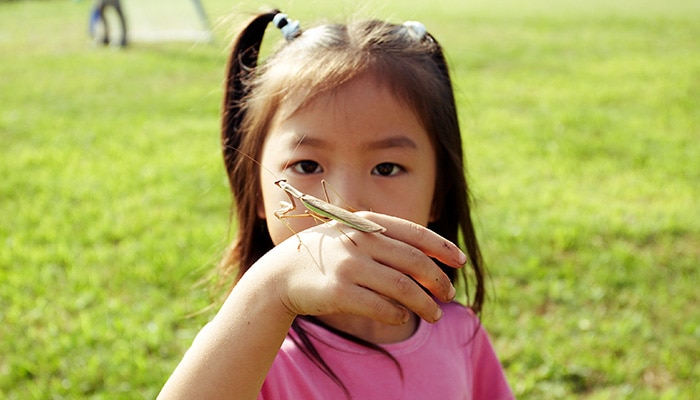While we believe that the books and resources recommended may be of value to you, keep in mind that these are suggestions only and you must do your own due diligence to determine whether the materials are appropriate and suitable for your use. PNC has no sponsorship or endorsement agreement with the authors or publishers of the materials listed.
CURIOUS CRAWLERS

Is It an Insect?
Children will explore the characteristics of insects.

Lesson Objective
Children will explore insects and how they are alike and different.
(Science) Science
What You'll Need
- Magnifying glasses – 1 per child
- 6 clear containers with lids containing ladybugs, crickets, roly-polies, ants, earthworms, snails (see Lesson Tips)
- Lettuce leaves – 1 per container
- Chart paper
- Marker
- Diagram of an insect (see Lesson Tips)
What To Do
Note: Punch small holes in the lids of the containers, and add some lettuce to give the animals air and keep them active. Before the lesson, draw a diagram of an insect, including three body parts (head, thorax, and abdomen), six legs, two antennae, and one or more pair of eyes. Put this aside until Step 2.
- Ask the children what they think an insect looks like, and draw what they describe on the chart paper.
- Display the insect drawing that you created prior to the lesson, and compare the two drawings.
- Explain to the children how to identify an insect (see Did You Know?).
- Distribute the magnifying glasses.
- Place the containers with the animals on the tables.
- Give the children some time to examine the insects.
- Have the children identify which animals are insects and which are not insects based on your discussion.
Resources
Home School Resources
Home educators: use these printable lesson PDFs to teach this lesson to your home schoolers. They're available in English and Spanish.
Content Provided By
Common Core State Standards Initiative – These lessons are aligned with the Common Core State Standards ("CCSS"). The CCSS provide a consistent, clear understanding of the concepts and skills children are expected to learn and guide teachers to provide their students with opportunities to gain these important skills and foundational knowledge [1]. (External) Visit the CCSS


